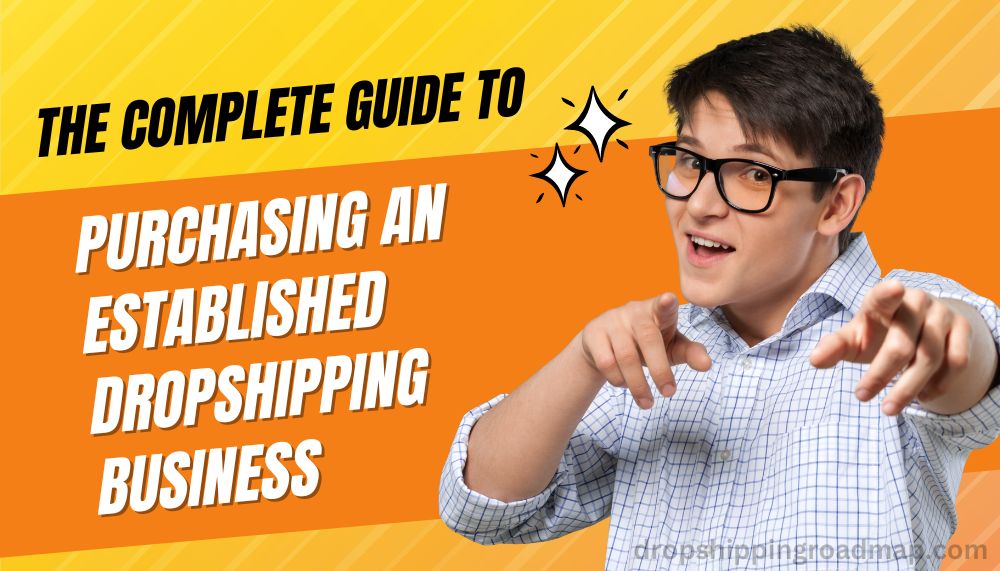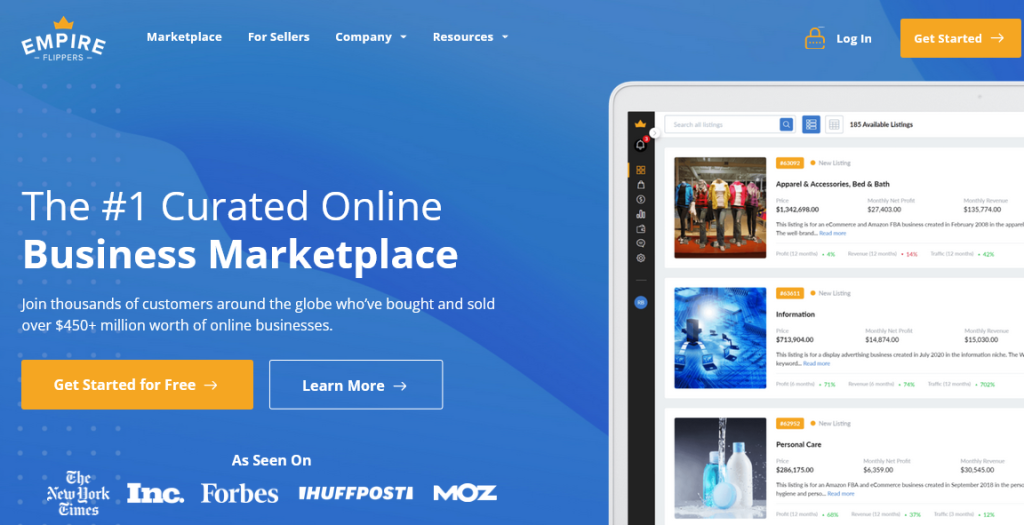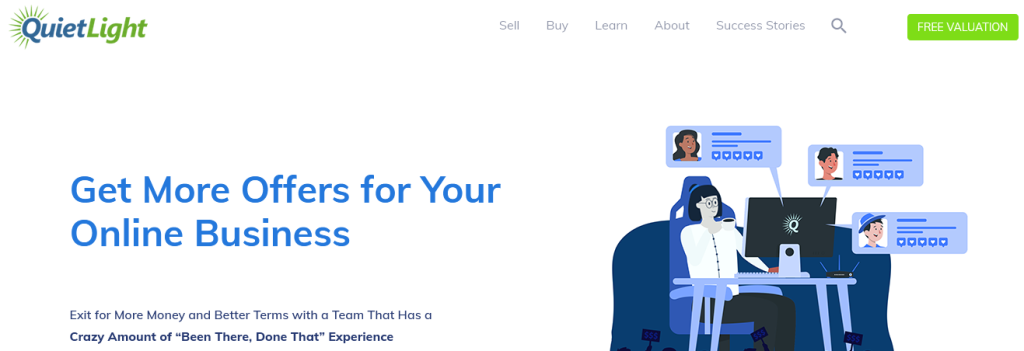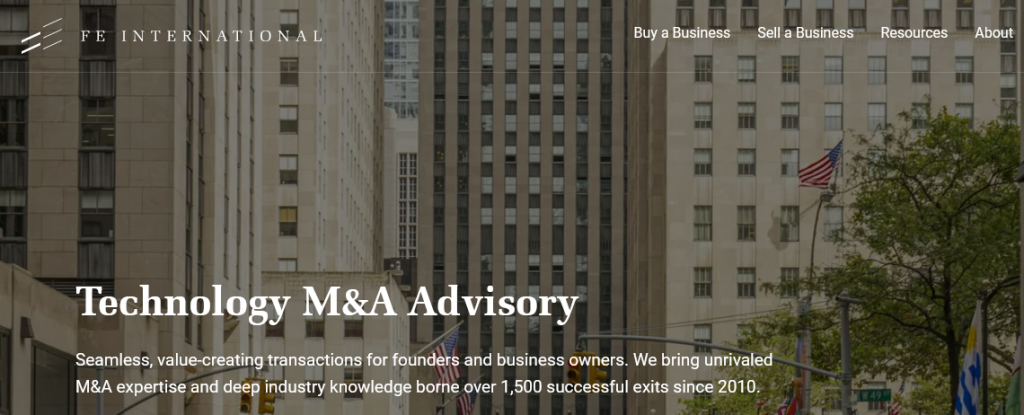So you want to get into the dropshipping game, but don’t want to go through the headache of building a business from scratch?
Purchasing an existing dropshipping store could be a smart shortcut for you.
Believe it or not, there are plenty of great dropshipping businesses already operating successfully that the owners are looking to sell. Buying one of these stores comes with some major perks:
- Instant cash flow and proof of concept
- Established products, suppliers, automation
- Existing customer base and traffic sources
- Bypass risky testing and validation phase
However, finding and evaluating a solid business opportunity takes some know-how.
Throughout this guide, I’ll provide comprehensive insights, step-by-step instructions, and practical tips to help you understand How to Evaluate and Purchase an Established Dropshipping Business.
I’ll equip you with everything you need to:
- Determine if buying a store is right for you
- Identify quality listings that meet your criteria
- Accurately value potential businesses
- Perform due diligence during the buying process
- Make operational and marketing improvements for growth
So if you want to shortcut your way to dropshipping success, you’re in the right place.
Let’s dive in.

Article Contents
- 1 Should You Purchase a Dropshipping Business?
- 2 Essential Criteria When Evaluating a Dropshipping Business
- 3 Valuation Multiples and Typical Price Range
- 4 Where to Find Dropshipping Businesses For Sale
- 5 Making an Offer and Finalizing Purchase
- 6 Tips for Evaluating Suppliers and Fulfillment
- 7 Optimizing and Improving the Business
- 8 Transitioning Ownership and Operations
- 9 Conclusion
- 10 FAQs on How to Evaluate and Purchase an Established Dropshipping Business
Should You Purchase a Dropshipping Business?
Before jumping on the first dropshipping store listing you see, let’s explore if acquiring an existing business is the right move for you.
The Pros
Purchasing an established store has some clear advantages over building one from scratch:
- Instant proof of concept: You’ll have revenue data from day one instead of taking on early risks.
- Pre-existing momentum: The business likely has optimized traffic sources, branding, products, etc. already dialed in.
- Turnkey operation: Many listings come with automated order/inventory management, so less hands-on work for you.
- Bypass launch phase: Skip potential months of testing unproven products, suppliers, ads, and web design.
- Leverage expertise: Learn from choices the current owner(s) made regarding platform, niche, etc.
The Cons
However, buying a store isn’t a silver bullet. Consider these downsides:
- Narrower margins: The selling price eats into your potential profits – is it worth it?
- Hidden issues: Until you take over, you won’t see behind-the-scenes challenges with suppliers, customers, etc.
- Limited customization: You may be “stuck” with existing brand identity, site design, and product focus.
- Cost barriers: Established businesses with healthy metrics often sell for tens or hundreds of thousands of dollars.
Is it For You?
Buying makes the most sense for intermediate-to-advanced dropshippers who want to:
- Scale faster by building on proven businesses
- Diversify income streams across multiple stores
- Leverage others’ legwork instead of starting totally from 0
Bottom line – if you have the budget and don’t want to start completely from scratch, acquiring a store can turbocharge your path to success.
Essential Criteria When Evaluating a Dropshipping Business
Ok, so you’ve decided that under the right conditions buying a dropshipping business could be the fuel for your dreams of e-commerce success and financial freedom. Awesome.
But diving into the first store listing you find is still not wise. You need to filter through the white noise and focus your search on businesses that meet the following make-or-break criteria:
Legitimate Track Record
I cannot stress this point enough – only consider stores that are 1+ years old. Anything less than 12 months of operating history is too risky in such a fickle industry.
You’re looking for a business idea that has already proven itself and overcome the early challenges, not just a store selling trendy products that might be popular for a short time.
How long has the business:
- Been live and selling online?
- Worked with its current suppliers and fulfilled orders?
- Optimized front-end branding and web design?
- Run its existing ad campaigns and traffic strategies.
- Built out back-end order automation workflows?
Established processes across these areas signal stability and momentum you can leverage.
Steady Traffic and Revenues
Along with the length of operations, pay close attention to the store’s income trends and traffic graphs:
- Are monthly sales, profit margins, and visitor stats going up, down, or staying flat?
- Does revenue vary a lot month-to-month or maintain a predictable range?
- Where does traffic originate? (Paid ads, organic search, influencers, etc.)
What you want to see is consistent (or growing) profits fueled by diversified streams feeding site visits and conversions. Declining traffic and erratic sales indicate problems you’ll inherit.
You may also like to read:
Suppliers and Fulfillment Vetted
Since dropshipping businesses don’t hold inventory, your fate is tied directly to 3rd party suppliers getting products to customers reliably.
Ask these key questions:
- Are suppliers overseas (long shipping) or domestic?
- What shipping methods and tracking are offered?
- What proportion of orders ship on time vs late?
- How often do supplier errors happen?
- How turnkey is the fulfillment process?
The best case is well-oiled automation with US-based suppliers and minimal hiccups. But get transparency upfront so you can assess risk areas.
This covers the “must have” basics.
Next, I’ll dig into other vital factors when assessing a potential acquisition.
Valuation Multiples and Typical Price Range
Alright, so you’ve found some dropshipping stores that check your must-have boxes for stability and growth potential. Now the looming question – how much should you pay to buy one?
The standard valuation method is basing price on a multiple of monthly profit, typically between:
- 18-24x – Lower-risk businesses, smaller profit margins
- 24-36x – Higher risk businesses, larger profit margins
For example:
- A store profiting $2,000/month would sell for $36k – $72k
- A store profiting $10,000/month would sell for $180k – $360k
Factors impacting where in the range a store falls include:
- Growth trajectory – Positive uptrends merit higher multiples
- Brand uniqueness – Generic stores merit lower multiples
- Business longevity – More years in business merit higher multiples
- Operational automation – More hands-off processes merit higher multiples
While buying a $50k+ business may seem intimidating, remember you’re paying for an engine of profit generation.
Within 12-24 months the income produced should surpass the upfront payment.
Where to Find Dropshipping Businesses For Sale
Once you know your budget and investing criteria, where do you find quality businesses that fit the bill?
I recommend checking out these main options:
Marketplaces
Top publishers of dropshipping listings include:
EmpireFlippers
Highly vetted opportunities across e-commerce models.

Flippa
Massive inventory of sites across niches and business models.

Quiet Light
Known for listing 6-7 figure e-commerce sites.

These let you filter and favorite relevant listings as well as preview businesses anonymously before buying.
Broker Services
Alternatively, brokers like FE International can represent your interests during an acquisition for specialized advice and deal negotiation.

This costs more but adds assurance through professional expertise.
I suggest browsing both self-service marketplaces as well as exploring broker assistance when evaluating larger or more complex stores.
Making an Offer and Finalizing Purchase
You’ve identified a dropshipping store that checks your boxes and falls within your budget. Time to wrap up the acquisition. Here’s an overview of that process:
Submit Offer
Once allowed access to a business’ full financial and operational details, decide on an offer amount.
Submit this via the marketplace platform or your broker with supporting justification. Expect some negotiation before settling on a final purchasing price.
Sign Letter of Intent
After verbally agreeing to terms, sign a Letter of Intent (LOI). This non-binding agreement outlines the buying timeline, price, and conditions to finalize the deal.
Perform Due Diligence
Now you and your team analyze the business further to validate its claims or uncover any red flags. Common due diligence checks include:
- Detailed financial records review
- Trial orders to test product quality
- Video calls with existing supplier and agency relationships
- Further website and traffic analysis
Address any concerns that arise before closing. Insert contingencies or adjust deal terms where needed.
Finalize Transition Details
Clarify any operational changes needed post-purchase like:
- Migrating web hosting, domains, etc.
- Establishing your supplier payment accounts
- Transitioning advertising accounts and other tools
Sign on the Dotted Line.
Finally, sign the Business Purchase Agreement, transfer funds, and take ownership of your new dropshipping business.
Tips for Evaluating Suppliers and Fulfillment
A dropshipping business lives and dies by its suppliers getting products to customers seamlessly. So assessing potential issues here is crucial before buying. Focus on these areas:
Supplier Reliability
Vet supplier performance metrics around:
- Order accuracy – % of correct items shipped without mistakes
- Damage rates – % of orders with breakage, defects, missing pieces
- On-time shipments – % of orders going out by the promised date
- Inventory continuity – Frequency of stock-outs disrupting order fulfillment
Ideally accuracy, condition, and timeliness should all rate 90% or higher from quality suppliers. Inventory shortages should happen rarely if ever.
Shipping Speeds
Since you don’t hold product stock, transit time is another make-or-break supplier factor. Look for:
- Transit time benchmarks – Average business days for customer delivery
- Shipping method mix – Balance of cheap vs. premium carrier usage
- Early/late splits – What rates of orders arrive before/after expected
- Tracking ubiquity – % of shipments with end-to-end tracking visibility
Faster, consistent delivery windows reinforce customer satisfaction. But beware of businesses relying heavily on slow methods like sea freight from China.
Fulfillment Automation
Order and inventory workflows should run automatically behind the scenes. Probe on:
- Inventory sync – How stock levels, pricing, etc. integrate across channels
- Order management – Tools for processing, routing, tracking fulfillment
- Returns automation – System for inspecting, approving, and replacing items
- Shipping notifications – Confirmation emails to customers
Limited automation means you inherit more hands-on, error-prone administrative tasks.
Returns/Exchange Policies
Don’t gloss over the fine print on product guarantees and make-goods. Be ready to stick to policies that keep customers happy.
Vetting suppliers thoroughly upfront prevents fulfillment surprises down the road.
Optimizing and Improving the Business
Part of assessing a potential dropshipping acquisition is understanding what untapped opportunities exist to take revenue and profit to the next level. During evaluations, look for avenues like:
Expanding Marketing Channels
Review current traffic sources – is the business fully capitalizing on channels like:
- SEO – Growth runway for improving organic rankings?
- Paid ads – Additional networks worth testing beyond existing buys?
- Content marketing – Options to boost brand visibility via blogging/videos?
Diversifying lead generation reduces risk and unlocks incremental customers.
Enhancing Branding and Products
Probe the uniqueness of the store’s brand identity and product catalog:
- Brand distinction – Does the site stand out from competitors? Should the logo, design, etc. be modernized?
- Product mix optimization – Would expanding into related niches or adjacencies make sense?
- Churning product assortment – Is there a process for rapidly testing and adding hot new items?
Refreshing visual identity and merchandise keeps growth going.
More Geographies and Social Reach
Ask if the current business solely focuses on the US or already sells into international waters. And assess chances to expand social media presence across platforms like Instagram, TikTok, etc.
Uncovering these types of untapped pathways helps justify acquisition costs and plan future scale.
Transitioning Ownership and Operations
Once you finalize a dropshipping acquisition, setting the business up for success under new leadership is critical. Key aspects to handle smoothly include:
Customer Data and Relationships
Continuity for existing buyers means handling details like:
- Email lists – Migrate contacts without losing subscriber engagement
- Payment accounts – Retain loyalty perks, credit options, etc.
- Support channels – Keep communication avenues open without gaps
Dropping balls here risks hard-won trust and repeat purchases.
Outsourcing Previously Manual Tasks
If the old owner personally handled certain activities, consider outsourcing things like:
- Web development/design – Agency for the evolution of site look, feel, functionality
- Paid advertising – Ad management firm to optimize spending and performance
- Email marketing – Dedicated ESP service for automation and broadcast messages
- Customer support – Expand virtual assistant capacity
This lifts work off your plate so you can focus on high-value priorities.
Vendor Relationship Building
Connect directly with key players like payment processors, hosting companies, etc. to centralize control and prevent potential account access issues.
Conclusion
And there you have it – a complete guide to strategically researching, valuing, and acquiring a profitable dropshipping business.
The due diligence may seem demanding, but is crucial to avoid inheriting headaches or overpaying. Take the process step-by-step to set your new enterprise up for growth out of the gates.
I hope this info gives you clarity and confidence to find a solid store that aligns with your entrepreneurial vision and takes your e-commerce ambitions to the next level.
FAQs on How to Evaluate and Purchase an Established Dropshipping Business
What’s the biggest risk when buying an existing dropshipping store?
The biggest risk is acquiring a business with hidden issues like unreliable suppliers, high refund rates, or declining traffic and sales. Vetting the business operations thoroughly before purchasing is critical.
What questions should I ask the seller about profit margins?
Ask for historical data on margins over time. Probe on how factors like product/shipping costs and conversion rates impact margins. Inquire whether margins stay consistent or fluctuate seasonally.
Should I reach out to existing suppliers before finalizing a purchase?
Yes, have a discussion with suppliers to independently validate reliability, fulfillment times, and policies around issues like defects, customs delays, etc.
How can I confirm website traffic and sales metrics?
Request read-only access to analytics accounts like Google Analytics and Shopify metrics. Audit traffic sources, top pages, conversion rates, etc. Consider hiring a forensic accountant to analyze finances.
What potential tax implications may I face when buying an online business?
Consult an accountant on tax obligations related to acquiring a business based on where both parties reside. Understand the sales tax management responsibilities you would take on. Factor tax advice into offer amounts.
Bringing the article How to Evaluate and Purchase an Established Dropshipping Business to an end. I hope you enjoyed it. Thanks for being here.



